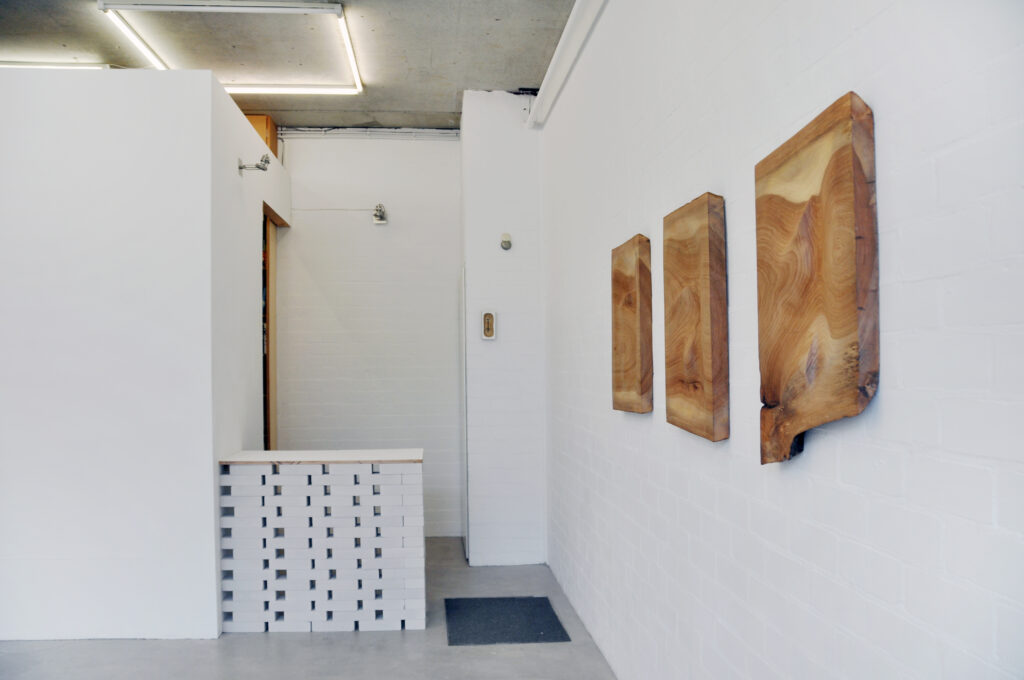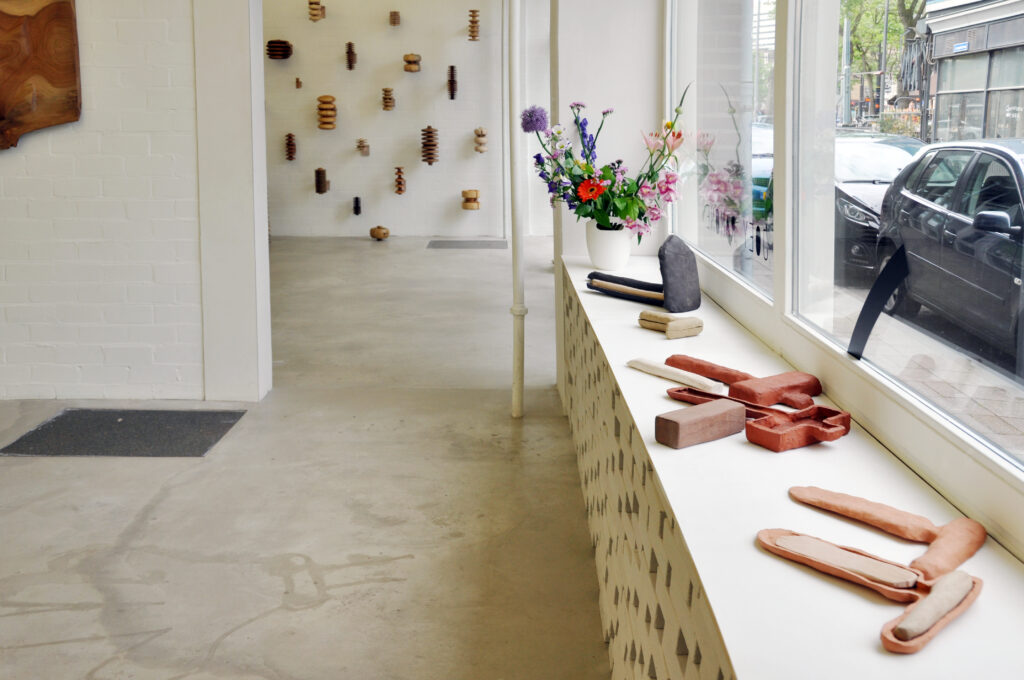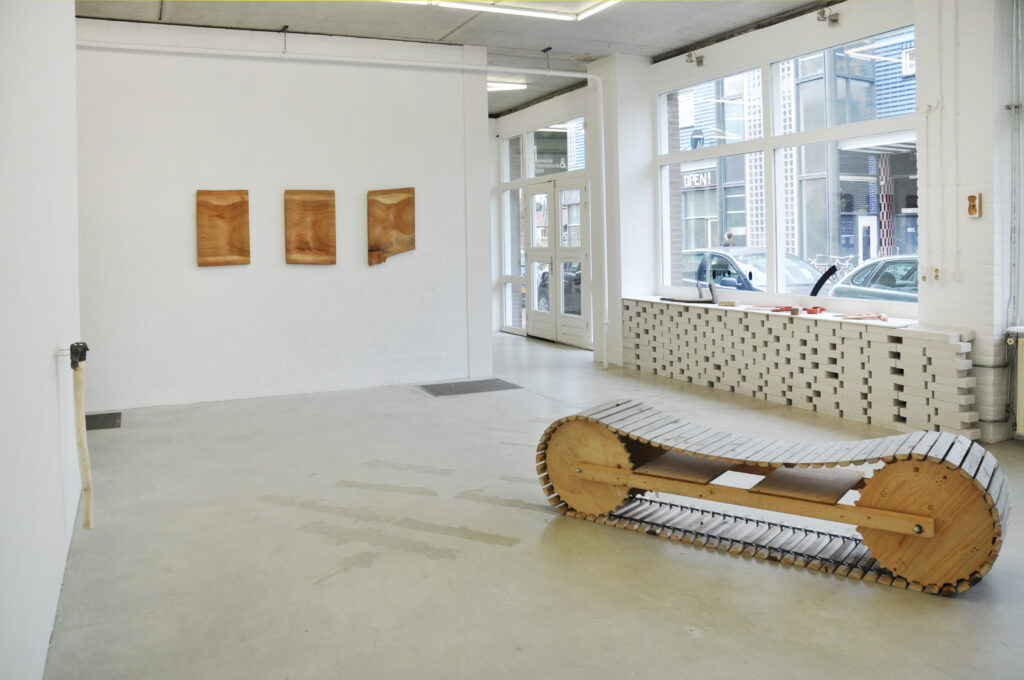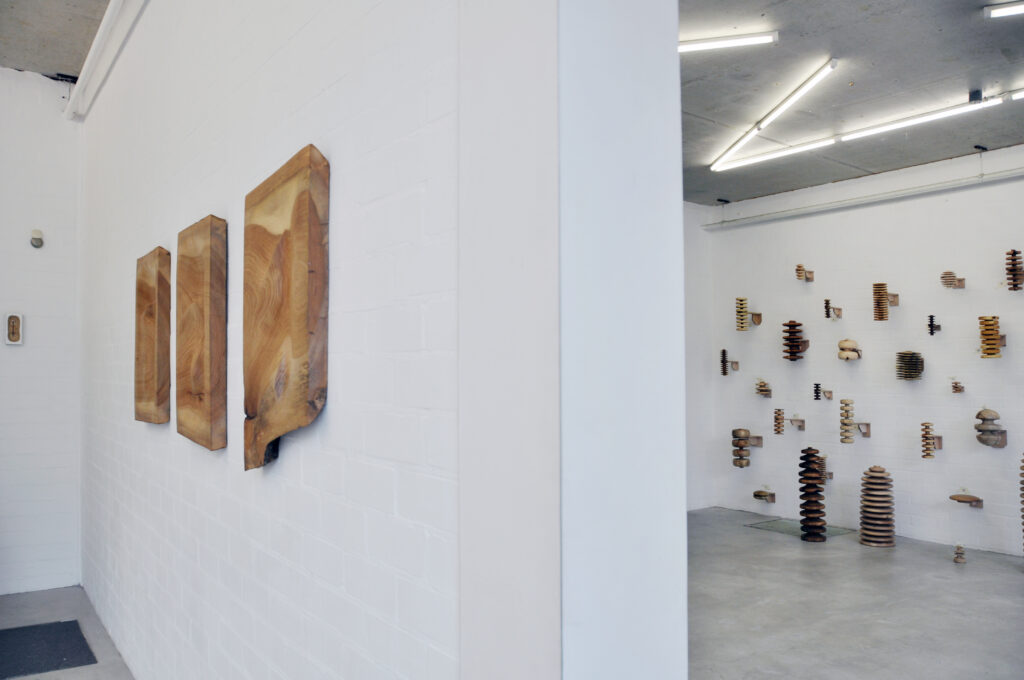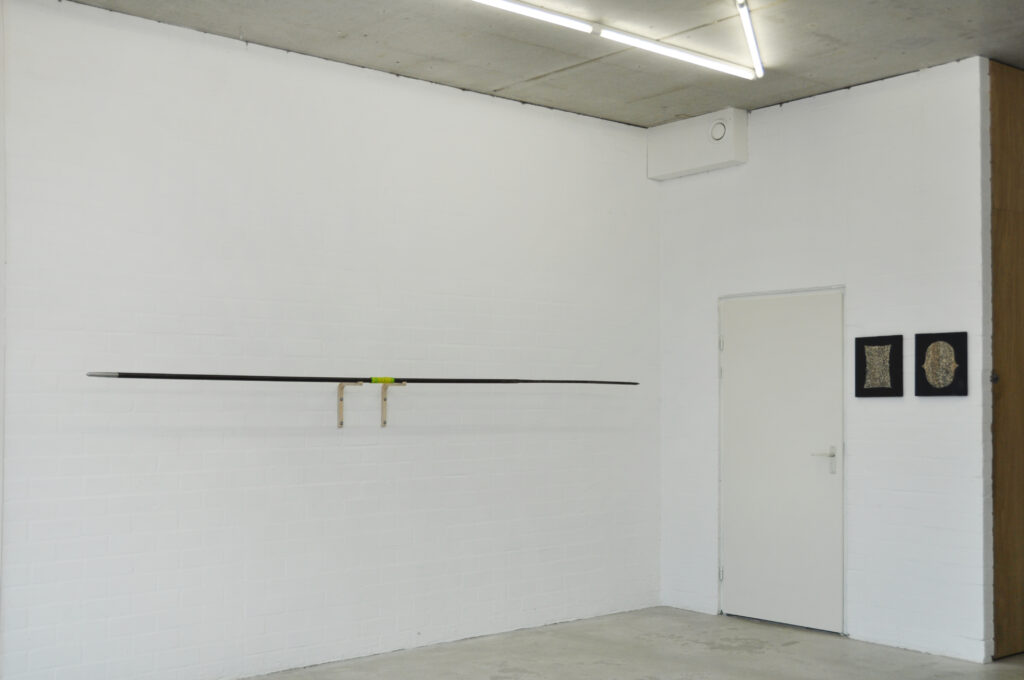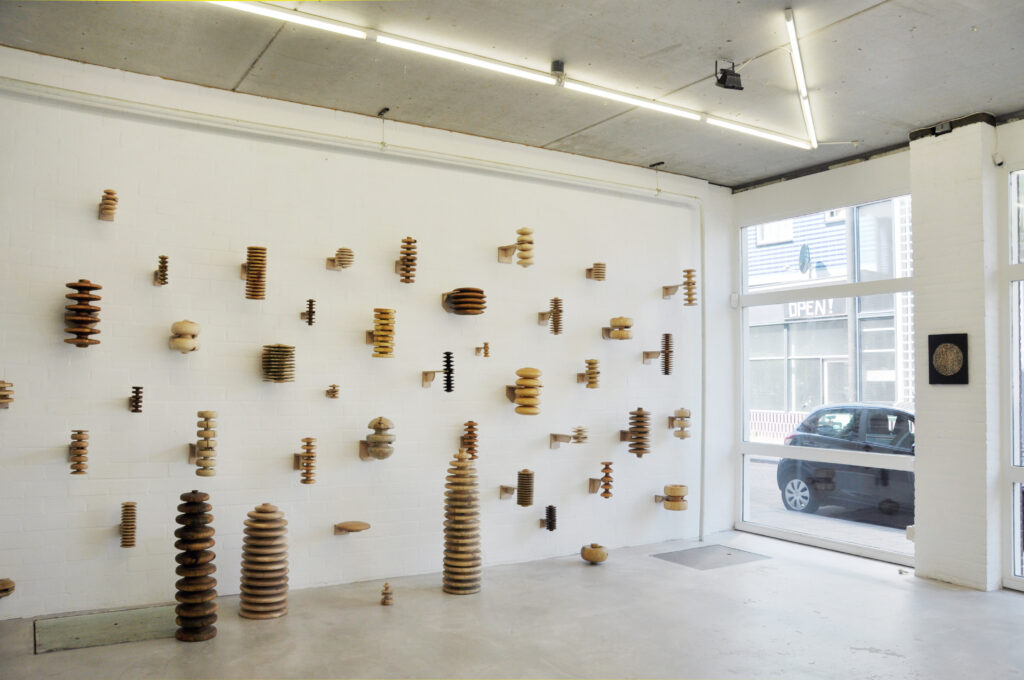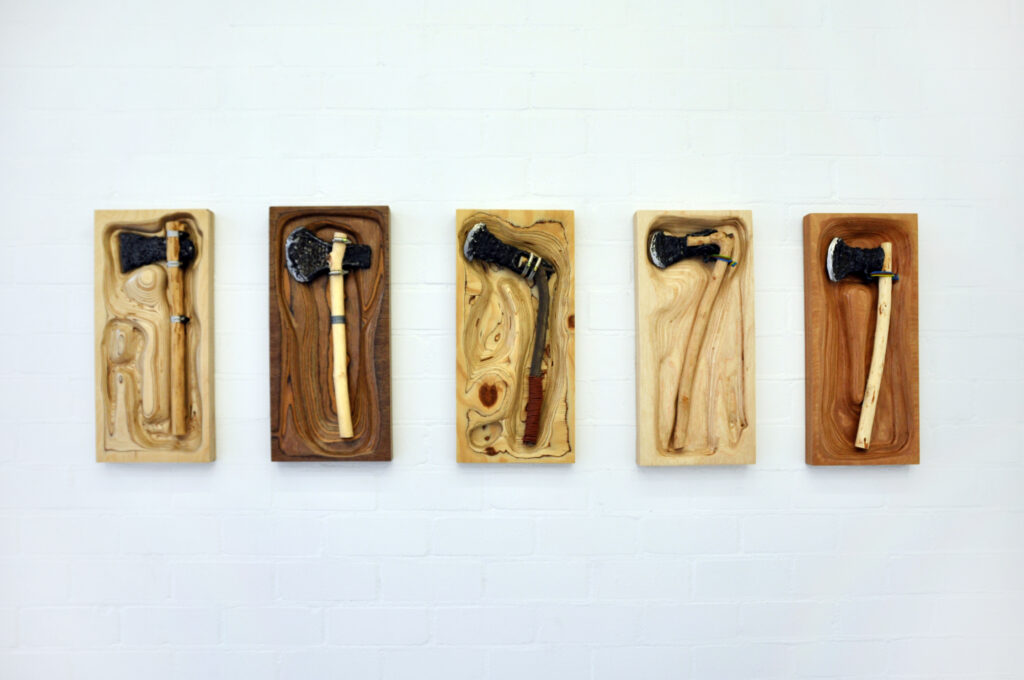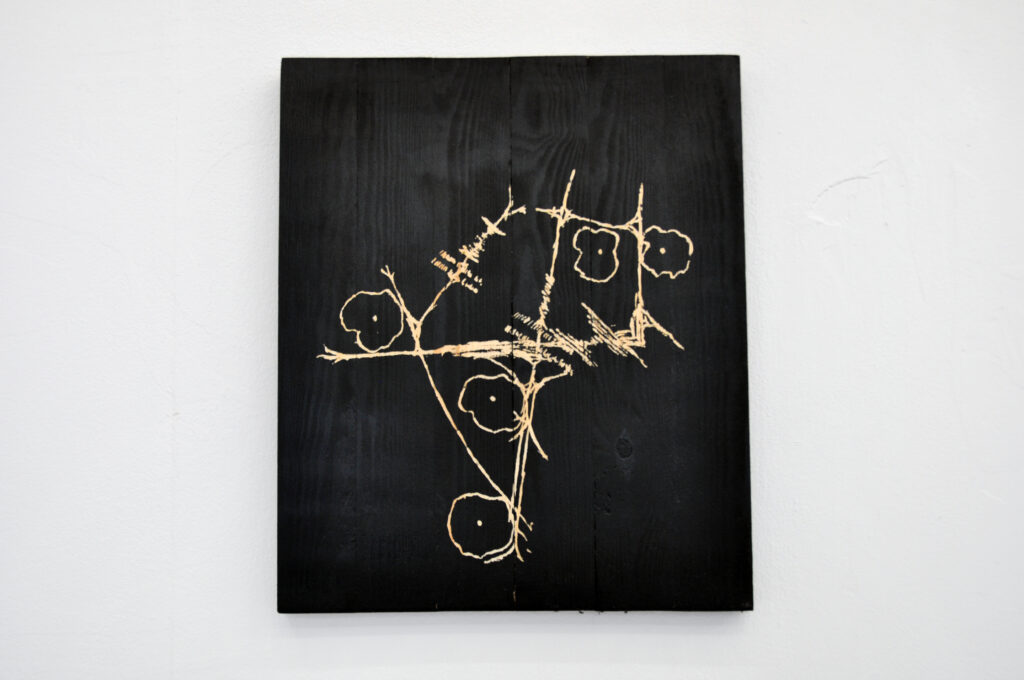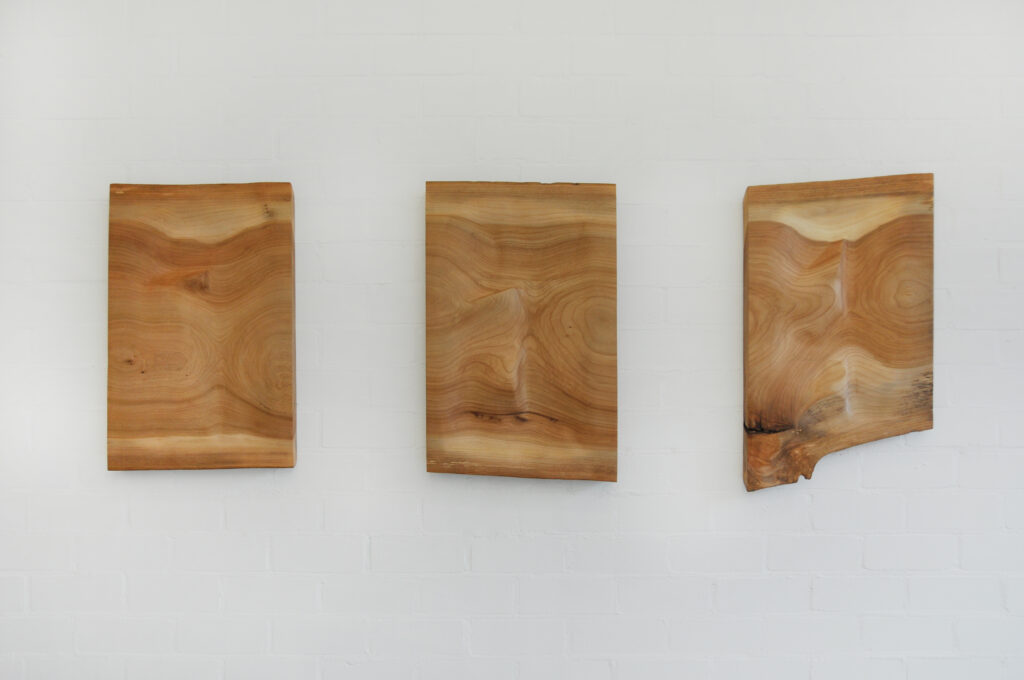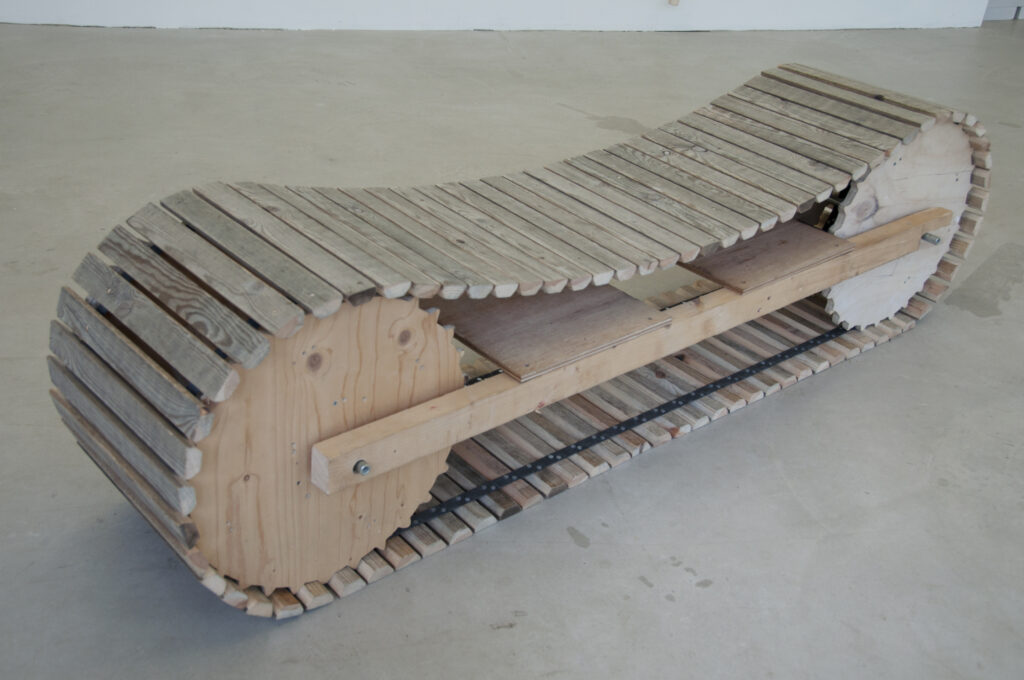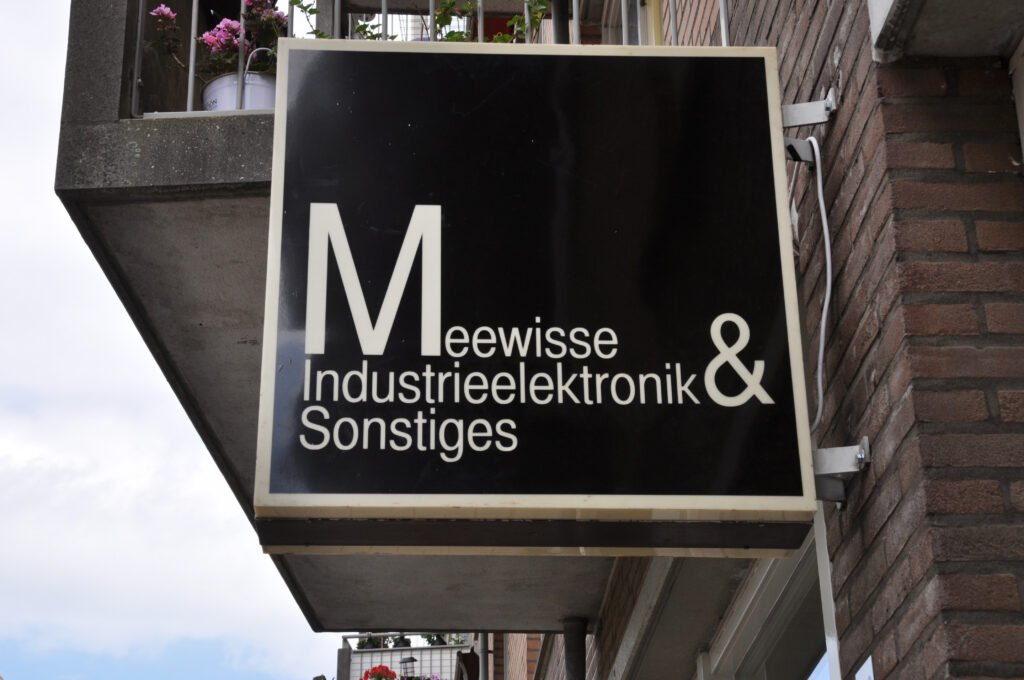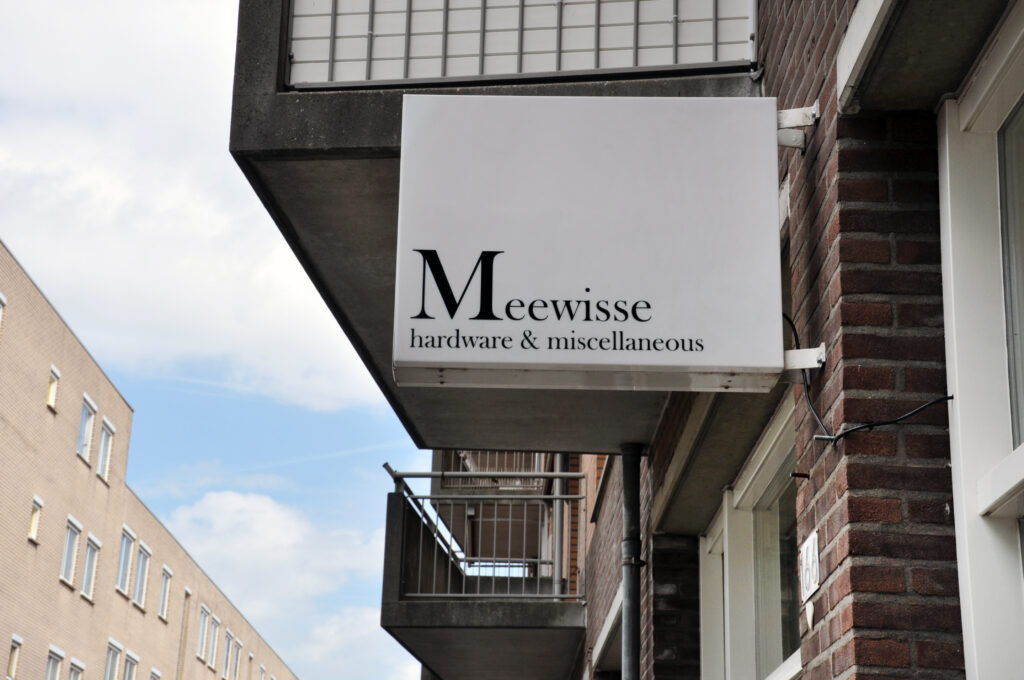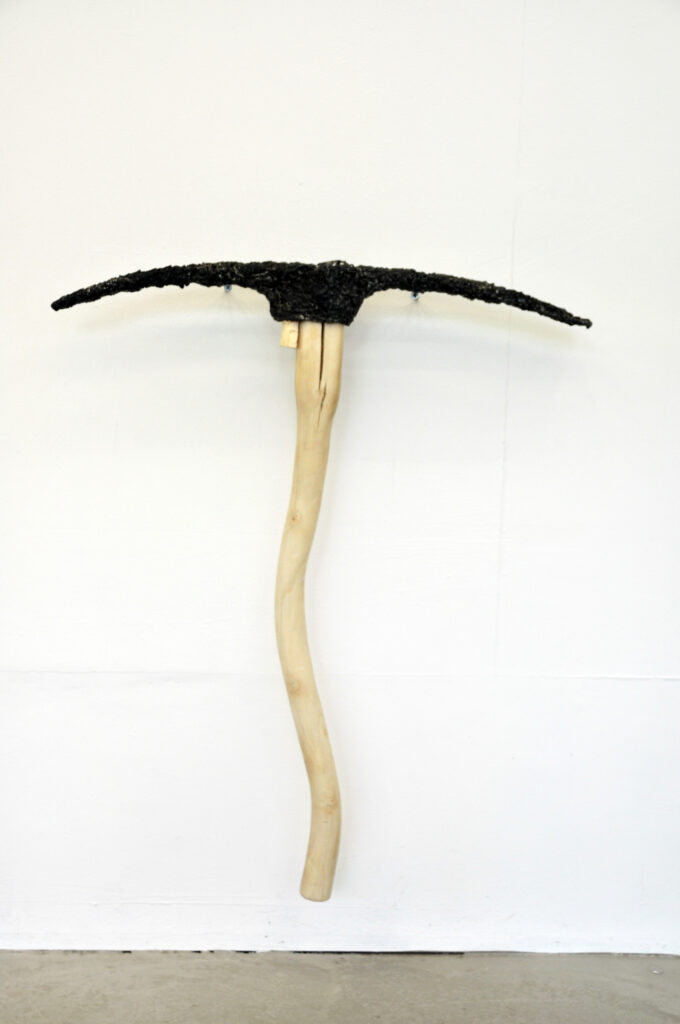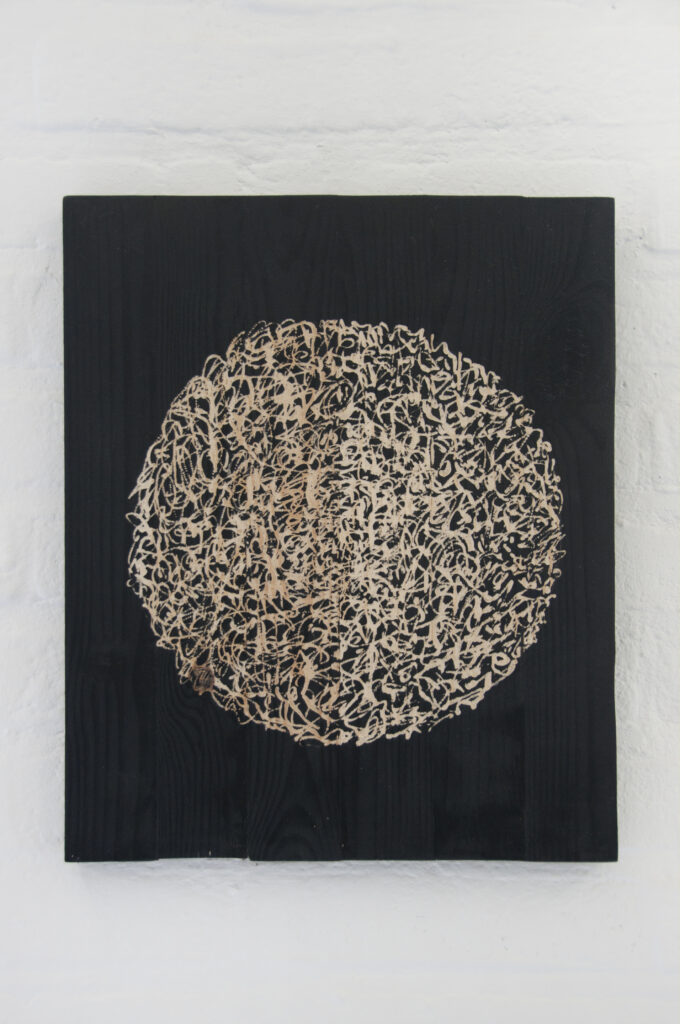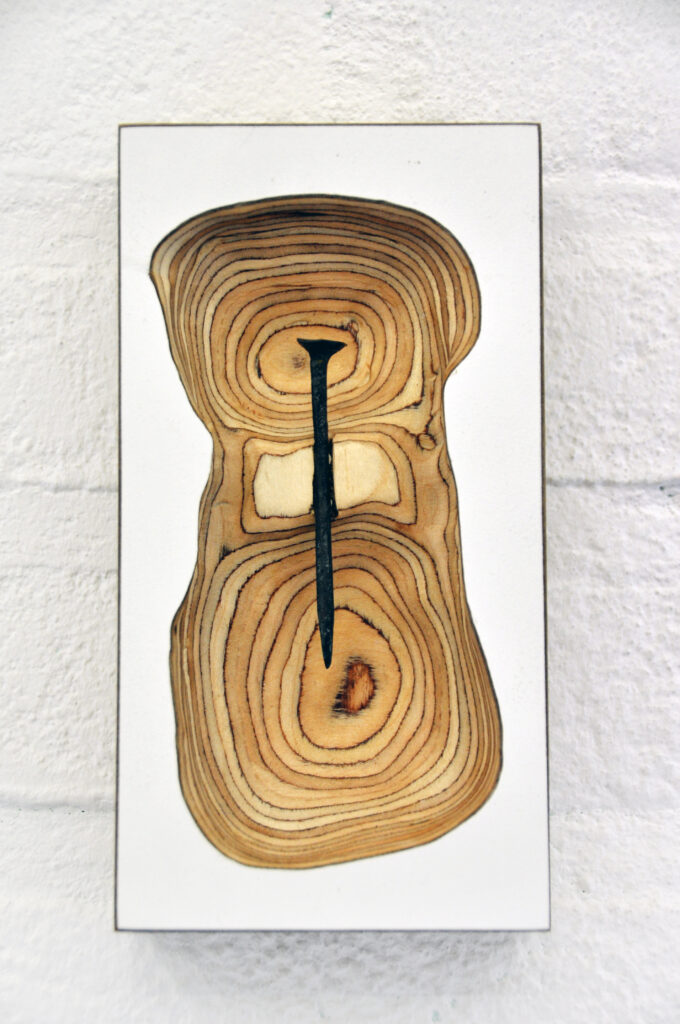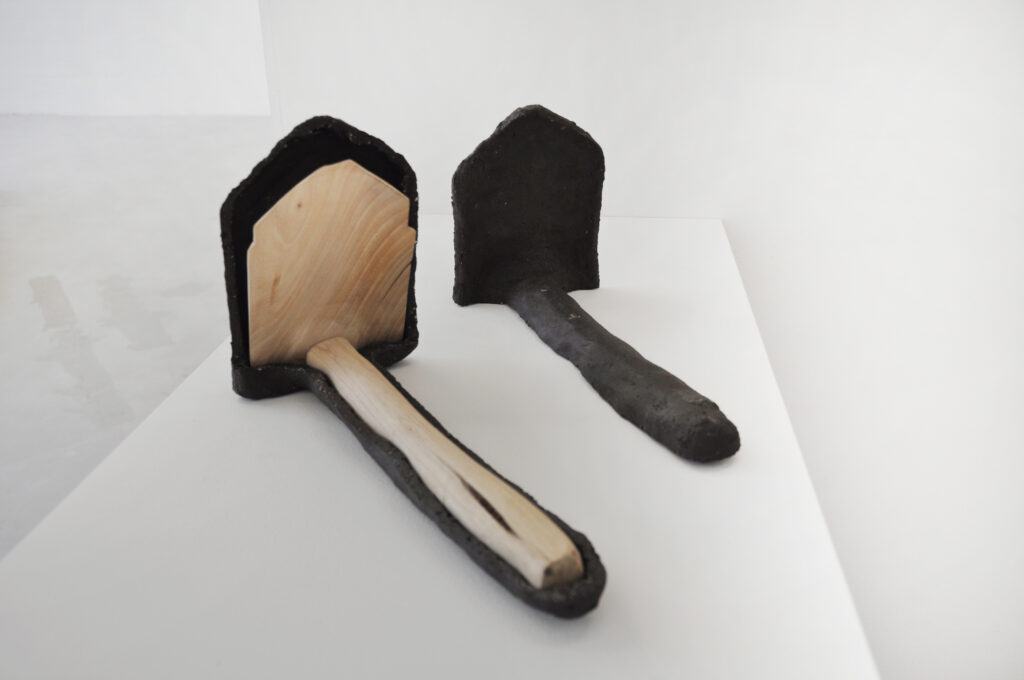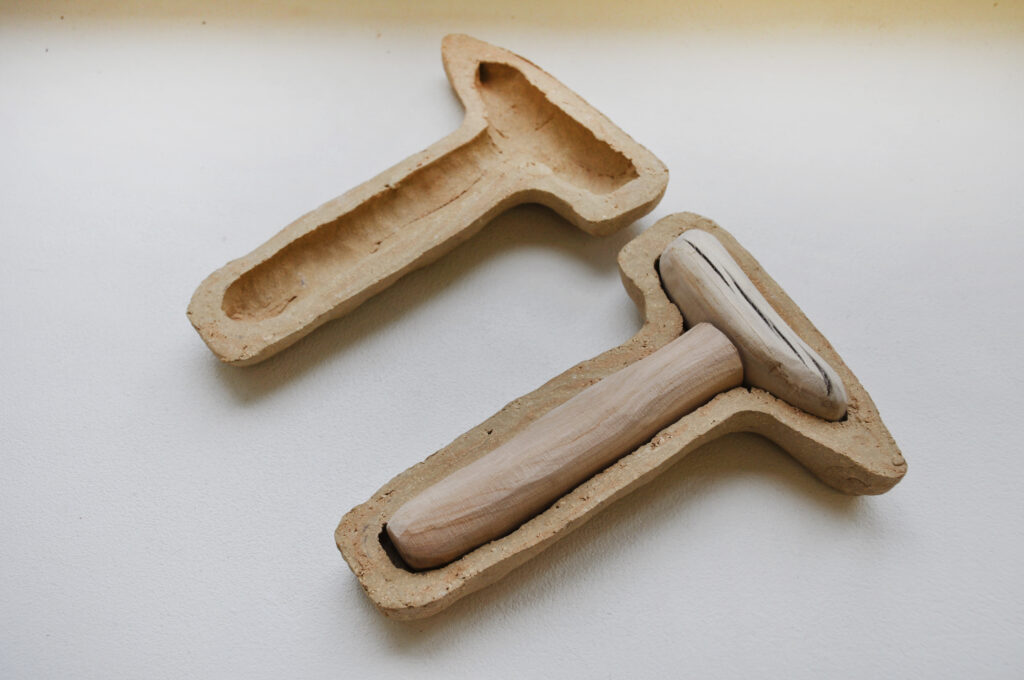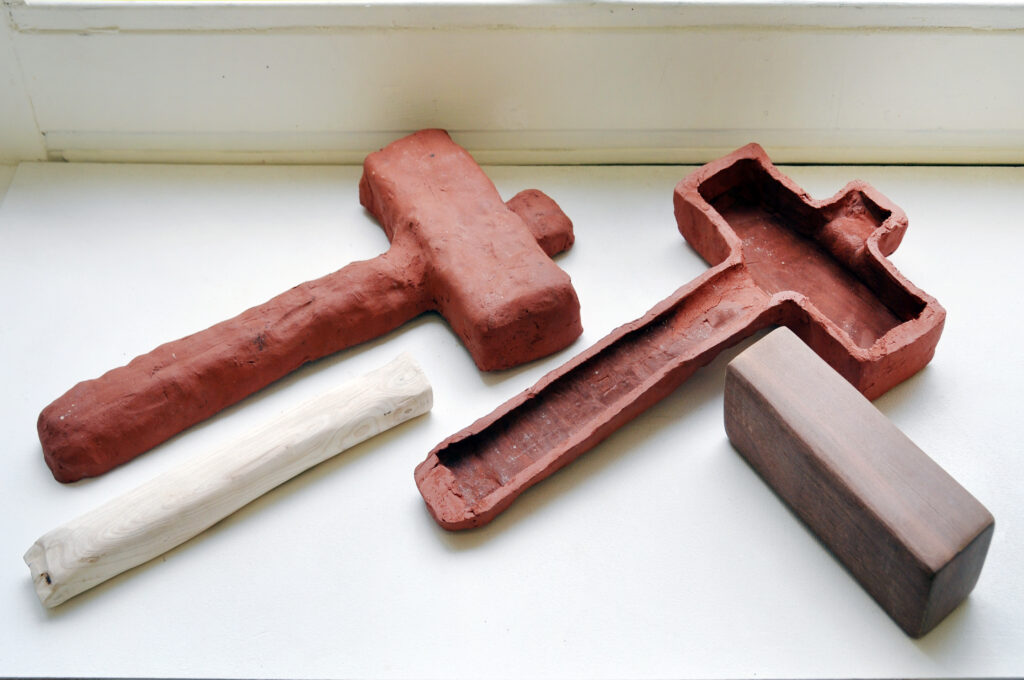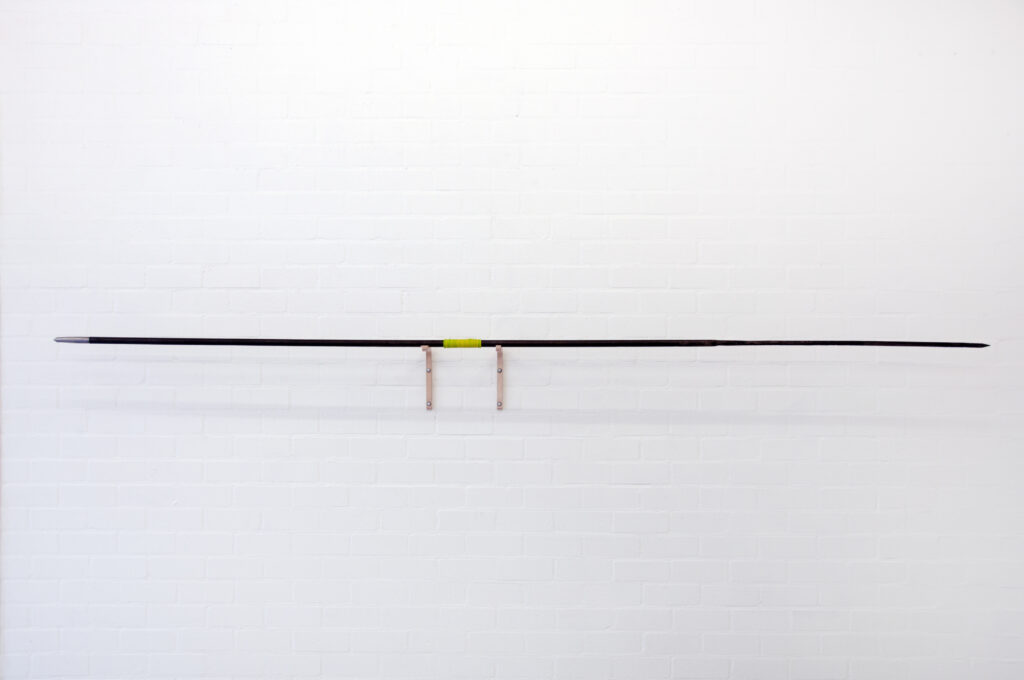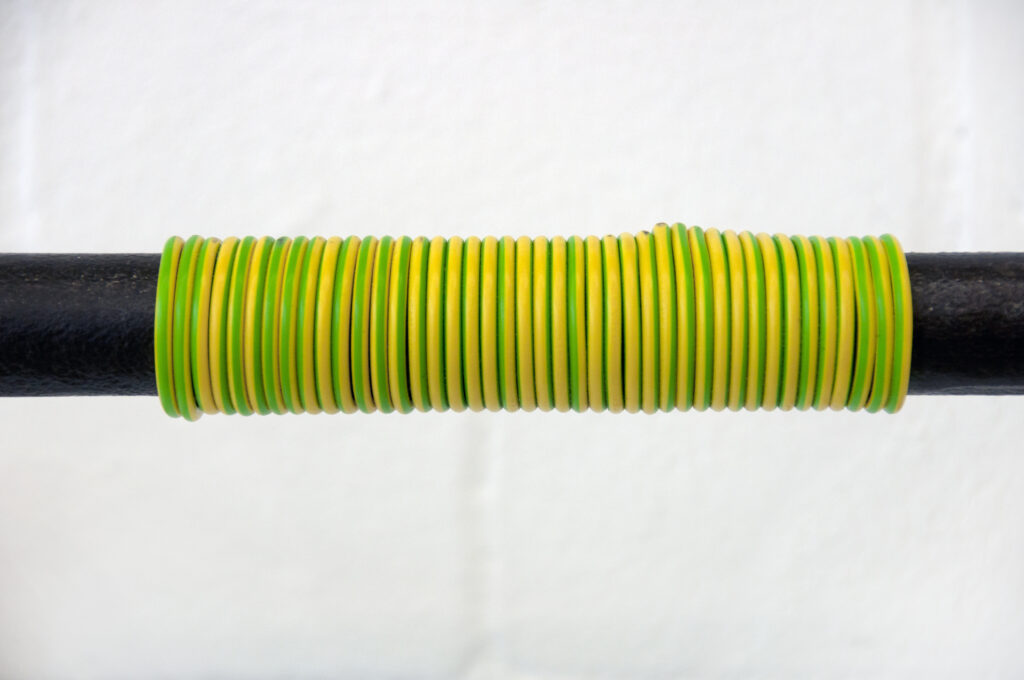Solo exposition at JOEY RAMONE, Rotterdam 2022
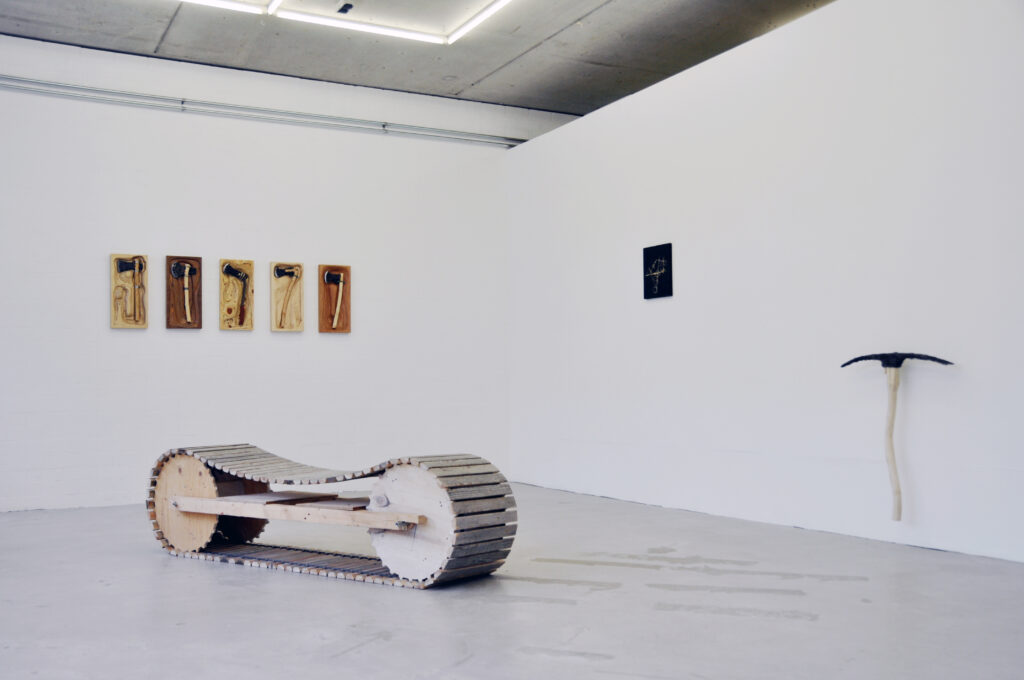
Exposition text by Kiki Petratou
Sculptured structures are bodies. Their matter consisting of different materials, is variously formed. The forming of it happens by demarcation as setting up an inclosing and excluding border. Herewith, space comes into play. Becoming occupied by the sculptured sculpture, space receives its special character as closed, breached and empty volume. 1
Hardware & Industrieelektronik is Maurice Meewisse’s not only first exhibition at JOEY RAMONE but also his first gallery exhibition in general. This is specifically noteworthy because his trajectory follows a very rich spectrum of activities and exhibitions in institutions and art spaces, which came to inform his critical attitude towards the institutionalized contexts in which he finds himself and led him to question his own position. He has been emphatically scrutinizing his role as an artist in relation to the context he brings with him in his practice. His explorations took him to the idea of an artist as a self-institutionalized figure to focus on that artist’s agency. In his last works he has been considering himself in the same way as he has been approaching a platform until now, with his doubts, vulnerabilities, curiosities and assumptions and looking for discrepancies between his theoretical and ideological views and seeing it as part of the larger context. This has ushered him to regard within his practice what kind of space he can offer as an artist to the people with whom he works as well as to the public. In that sense, his role has changed from that of the artist or the performer on stage to that of the facilitator to the extent that in one occasion he became the curator and started inviting and hosting other artists. This is essential and connects with Maurice’s conception of context in the broad sense that does not just concern the physical place, but also the politics surrounding it, the institution and the reason why he is there.
Anthropological studies of space and place recognize that landscape, space and the body represent important sites for cultural meaning, social and political memory, and public discourse. Space can be used to carry social meanings that are culturally and historically constructed as well as contested. The hermeneutic study of space explores space as a symbolic medium and recognizes that space and space language convey a culture’s meanings about the immediate world, while place carries with it sentiments of attachment and identity that emerge out of lived experience. 2
Maurice Meewisse’s work is in principle site-specific, whereby he sees the ‘site’ as part of a complex network of interests, projections and relationships. Within that he looks for a discrepancy, a certain complexity or a potential hidden beneath the surface. These finds function as the impulse to create a work or action for which he uses different techniques, ranging from sculpture to performance. In fact, and this is true for his present installation at JOEY RAMONE, he negotiates the tension between the sculptural and the performative space. His installation consists on the one hand of the making of space within space as it were. The transformation that the gallery underwent under Meewisse’s auspices doesn’t only concern the placement of artworks but also and most importantly the alteration of the context, which treats space as a symbolic medium and allows for new relationships and new imaginaries. In the hands of Meewisse space becomes place as it connects to our memory and experience of certain elements with which we are confronted within but also outside the exhibition space. In fact the borders are blurred in a sense that the outside suggests that one enters not the gallery as we know it but Meewisse’s own ‘dwelling’. The two Neon signs – installed at the façade above the two entrances of the gallery – read Meewisse hardware & Miscellaneous and Meewisse Industrieelektronik & Sonstiges. This intervention evocative of a different context became a gesture that has opened up new potentials and possibilities of interpretation and participation. Reflecting on his approach Maurice Meewisse explains: I go into context with an open mind and try to gain insight into the network of relationships that make up such a context. From that position I make an aesthetic intervention and try to provoke a re-evaluation of our patterns of perception or behavior. I explore the boundaries of a context, looking for inconsistencies or for something that is overlooked. With my work I examine the projections on that context and add a certain subjectivity to bring to light something that can break our conditioned patterns. The vital point here is that space in its most fundamental sense is based on the ‘release’ of places. In Heideggerian terms, this involves ‘making-room’, and in the course of this, ‘granting’ and ‘arranging’.
making-room admits something. It lets openness hold sway which, among other things, grants the appearance of things present to which human dwelling sees itself consigned. On the other hand, making-room prepares for things the possibility to belong to their relevant whither and, out of this, to each other… Place always opens a region in which it gathers the things in their belonging together. 3
The interconnectedness of body, space, politics and history is manifest in the ways Meewisse stages his work, piece by piece and as an installation unfolding freely, starting from the exterior and moving into the two exhibition rooms. The individual works are explorations of a more autobiographical nature, connections of the artist’s past with stories he came across. The prevailing material throughout the exhibition is scavenged wood because as Maurice sees it, it is alive, it is transformative and it carries its own history. Such is the case of the immersive installation “Isolators”, which includes 47 pieces of diverse sizes, made out of different types of wood, of different timelines with countless tales to tell and sourced throughout the country.
Following Heidegger’s idea that ‘things themselves are places’ – the elemental notion of place is ontologically fundamental – Meewisse’s ‘sculptures’ are not just things that occupy the space but they are ‘places’ themselves, they are the embodiments of places.
1. Heidegger, Art and Space in Leach, Rethinking Architecture, 121.
2. Pauline McKenzie Aucoin, Toward an Anthropological Understanding of Space and Place,408.
3. Heidegger, Art and Space in Leach, Rethinking Architecture, 123.
Exposition overview
